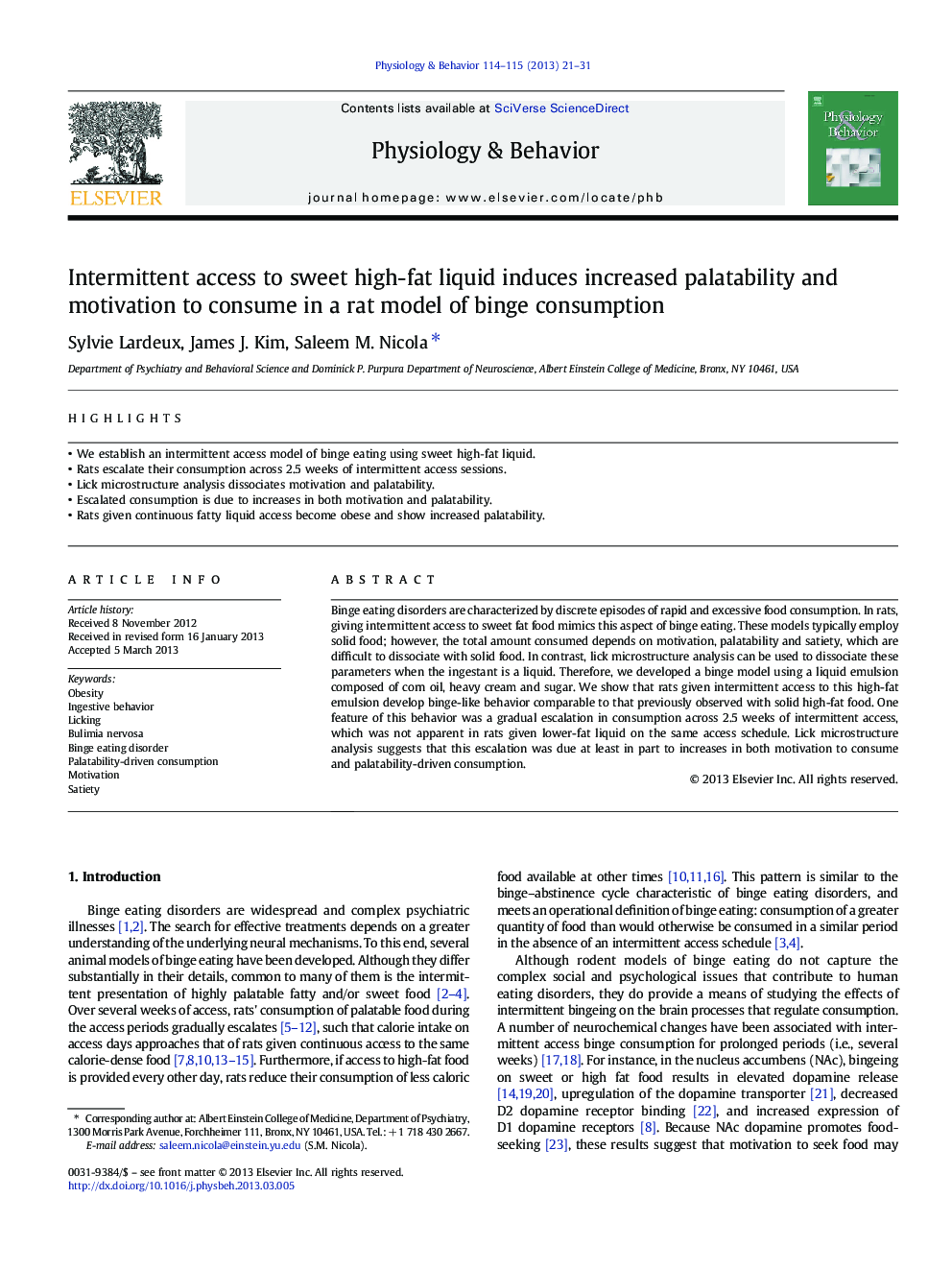| Article ID | Journal | Published Year | Pages | File Type |
|---|---|---|---|---|
| 2844360 | Physiology & Behavior | 2013 | 11 Pages |
•We establish an intermittent access model of binge eating using sweet high‐fat liquid.•Rats escalate their consumption across 2.5 weeks of intermittent access sessions.•Lick microstructure analysis dissociates motivation and palatability.•Escalated consumption is due to increases in both motivation and palatability.•Rats given continuous fatty liquid access become obese and show increased palatability.
Binge eating disorders are characterized by discrete episodes of rapid and excessive food consumption. In rats, giving intermittent access to sweet fat food mimics this aspect of binge eating. These models typically employ solid food; however, the total amount consumed depends on motivation, palatability and satiety, which are difficult to dissociate with solid food. In contrast, lick microstructure analysis can be used to dissociate these parameters when the ingestant is a liquid. Therefore, we developed a binge model using a liquid emulsion composed of corn oil, heavy cream and sugar. We show that rats given intermittent access to this high-fat emulsion develop binge-like behavior comparable to that previously observed with solid high-fat food. One feature of this behavior was a gradual escalation in consumption across 2.5 weeks of intermittent access, which was not apparent in rats given lower-fat liquid on the same access schedule. Lick microstructure analysis suggests that this escalation was due at least in part to increases in both motivation to consume and palatability-driven consumption.
